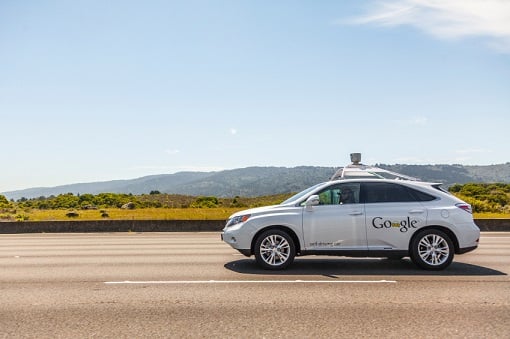The following is an opinion article, written by John Smith, regional sales director, CenturyLink EMEA.
The motor insurance industry is currently undergoing a period of instability, with the general agreement being that economics, regulation, and technology are the three broad-based factors responsible.
A new economic and regulatory reality
While investing customers’ premiums has historically been a key profit driver for insurers, the extended low interest rate in the UK has made this a less lucrative source of income. Indeed, according to Keith Richards, managing director of engagement at the Chartered Insurance Institute (
CII), “economic confidence across the insurance profession is at its lowest level since 2011.”
Recent changes proposed by the government to the Ogden discounted rate, which determines the way compensation pay-outs are calculated, are set to put insurers under greater pressure. With the rate due to be cut from 2.5% to -0.75%, insurers will be forced to pay claimants more money.
Elsewhere, the government is trying to crack down on the practice of insurance providers being taken to court by claims management firms pursuing injury claims and associated legal expenses. Until this happens though, it will continue to remain a burden on insurers’ finances. And, although regulators are taking steps to reduce the risk of fraud in the motor insurance industry, such as implementing fixed tariffs to cap compensation pay-outs for whiplash-related injuries, it’s estimated that more than £1 billion a year is lost to insurance fraud.
Disruptive technology
Recent technological advancements, such as the growing interest in autonomous cars, have led to disruption in consumer purchase habits and the competitive landscape for insurers.
Offering fast, highly tailored products and services that appeal to a more tech-savvy customer base, an increasing number of insurtech companies are beginning to nibble at the heels of traditional insurance providers who are struggling to keep up.
What’s more, when you take into account the evolving nature of vehicles, and particularly the rise of autonomous cars, the technology landscape clearly represents a number of different challenges to be overcome.
Recently however, in an effort to reduce the complexity around driverless cars, the government proposed the Vehicle Technology and Aviation Bill, which includes new rules stipulating that insurers will be primarily responsible for paying out damages resulting from accidents caused by driverless cars – both when the driver is in control and when they are not.
While insurers will certainly welcome some clarity on this new technology, there still exists a number of grey areas. If judged to be “allowing the vehicle to drive itself when… not appropriate to do so”, for example, it will be the driver’s responsibility to pay out. The exact parameters of “not appropriate” aren’t clearly defined, however, and are therefore up for debate. It will be important for insurers to be clear on how they interpret this phrase, indicating specific weather conditions in which the self-driving function is inappropriate, for instance, or exactly where it would be unsafe to remove the manual function on a clear road.
And with high-tech cars potentially vulnerable to hacks from cybercriminals, insurers will also be required to clearly identify with whom the liability sits with accidents resulting from a cyber-attack.
Making the best use of data
Having struggled to keep up with a deluge of data over recent years, car insurers need to improve data collection and analysis if they hope to survive in this challenging environment.
Big mergers and acquisitions across the industry have left many insurance firms with a complex amalgamation of disparate IT systems, unable to communicate with one another. Many are now struggling with dirty data, containing errors, miscoding, missing values and other flaws, all affecting the validity of any attempted analysis.
To derive any benefit from this data, it’s important to first understand the basics of a hybrid IT environment; embracing the cloud will allow insurers to take a more flexible approach to innovation, and enable them to adapt their digital solutions without having to overhaul their entire IT network.
Providing they take smart measures to improve their data collection and analysis capabilities, motor insurers will be in a good position to take advantage of the opportunities for revenue generation presented by the rise in driverless cars.
More clean, actionable data can lead to a reduction in fraud, enabling insurers to identify exactly when and where a crash occurred, for example and, as long as clear stipulations have been set, defining when it is inappropriate to use the self-drive mode will allow insurers to clearly identify when a driver is making a fraudulent claim.
Deeper insight into customers’ driving behaviour will also open up the opportunity for tailored motor insurance packages, which will help insurers to compete with their newer, tech-savvy counterparts.
This insight can also offer additional upselling opportunities. Motor insurers specialising in other types of insurance, will know when their customers are travelling, for example, and will be able to offer travel cover that suits their requirements.
Motor insurers are undeniably going through a turbulent time and, while many of the external factors influencing this are beyond their control, they can better position themselves to survive and thrive by making changes from within.
The preceding was an opinion article, written by John Smith, regional sales director, CenturyLink EMEA. It does not necessarily reflect the views of Insurance Business.
Related stories:
Tesla: Autonomous cars could present massive disruption for insurers'
ABI slams IPT rise as a “raid on the responsible”


